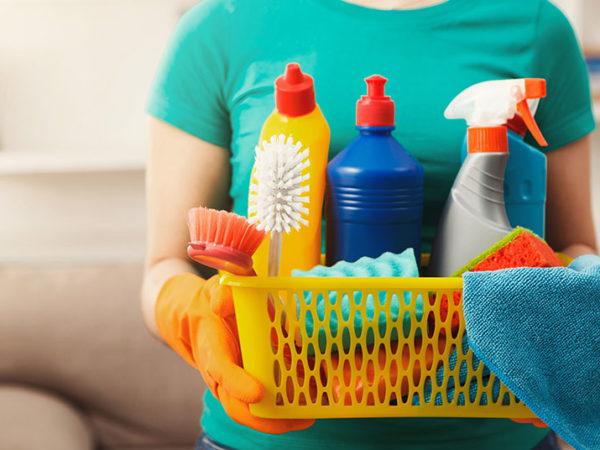
Carpets can look clean on the surface, but dust, dander, pollen, bugs and grime may be trapped in their fibres. Regular vacuuming and cleaning are essential to fully remove visible – and invisible – stains, dirt and pests.
Our definitive guide to low-maintenance carpets will help you find the carpet that requires the least care and attention.
Overview of carpet types
Here, we explain the most common carpet types. We look at the fibre they’re made from, the cut and pile, to find out which is easiest to clean.
Fibre
Most carpets are made from one of the following carpet fibres:
- Nylon: durable, versatile, easy to clean and can be used in all areas of the home.
- Polyester: not as resilient as nylon but is naturally stain-resistant and easy to clean.
- Polypropylene (olefin): not as durable as nylon or polyester, but is very soft, doesn’t absorb water and is stain and fade resistant.
- Acrylic: it’s not as soft as polypropylene but is water, stain and fade resistant.
- Triexta: like nylon but softer and naturally hydrophobic, so it repels stains and moisture damage well.
- Wool: a natural fibre that’s surprisingly stain-resistant, but spills and marks must be cleaned immediately. Chemicals in stain removers may damage wool carpets. Other natural fibres include sisal, coir, jute and seagrass.
- Blends: many carpets are blends of natural and synthetic materials because synthetic materials are easier to clean.
Pile
Carpet fibres are either looped, cut or loop and cut.
Loop carpet has fibres that are looped through the backing and uncut on the carpet surface. Loop carpets are strong, sturdy and resist stains.
You don’t have to vacuum every time a loop carpet gets walked on. They can stand up to heavy foot traffic, which makes them an ideal choice for hallways and stairs.
Loop pile is also trackless, so no vacuum or walking tracks will show. Unfortunately, the fibres can get snagged and pulled loose by sharp objects and pets’ claws.
The most popular loop-pile carpet styles are berber and sisal.
Cut carpet consists of fibres that are cut or sheared at the ends. They’re soft and more luxurious than loop carpets.
There are five basic styles of cut-pile carpet:
- saxony
- velvet
- frieze
- shag
- cable.
Cut-and-loop carpet is a combination of high cut tufts and lower loops in a variety of sculptured patterns. They’re high maintenance, so not ideal for high-traffic areas.
Factors that affect carpet maintenance
There are a number of factors that affect how easily a carpet is cleaned and maintained. Consider these features when looking for a low-maintenance carpet.
Carpet height
Carpets have differing fibre heights that come up from the carpet base. The height influences how easy the carpet is to clean and maintain. Generally, the higher/longer the carpet fibres, the harder it is to maintain.
Level loop carpet is smooth and even.
It’s the easiest height to maintain as it provides less area for dirt and debris to lodge. It’s also less likely to snag. Cut-and-loop and multi-level carpets vary in height and can form textures that are hard to maintain.
Material
Carpets are usually made from animal hair, plant fibres or synthetic fabrics.
Synthetic fibres, such as polyester and nylon, are easier to clean and resist staining and crushing more than plant fibres (cotton) and animal hair (wool).
Colour
Medium-dark carpets are more resistant to visible staining and damage than lighter or paler carpets. A medium or darker colour hides marks more easily.
If you choose a light-coloured carpet, it will need more regular cleaning and vacuuming.
Density
Carpet density – or the weight of fibres in a given area of carpet – is typically reported as a number of ounces per cubic yard. It’s calculated using a specific formula: carpet face weight x 36 / pile height.
The imperial measures are widely used even in countries that otherwise use the metric system.
Carpets for home use should have density ratings of at least 3,600 ounces per cubic yard. A density of 5,000 is recommended for areas with high traffic.
Carpets with a higher density hold up to traffic and wear the best.
However, high-density carpets can be harder to clean. There are more fibres for dirt and bugs to hide in. Choose a medium-density carpet for easier cleaning.
Best low-maintenance carpet choices
If you’re looking to buy the best low-maintenance carpet, choose one with these qualities:
- low level
- loop
- medium-density
- medium colour (not too light or dark)
- synthetic fibre.
Best carpet for high-traffic areas
When choosing a low-maintenance carpet for a high-traffic area, such as a hallway or lounge, choose a hardy carpet that will withstand heavy footfall without showing signs of crushing.
A level loop synthetic carpet is your best option. It’s made from durable strands of equal size loops that create a flat, even surface that won’t crush.
It’s easy to vacuum, clean and can hide dirt without the dirt getting trapped in the fibres.
How Chelsea Cleaning can help
Low-maintenance carpets make cleaning a lot easier – but the easiest option of all is to contact us at Chelsea Cleaning!



